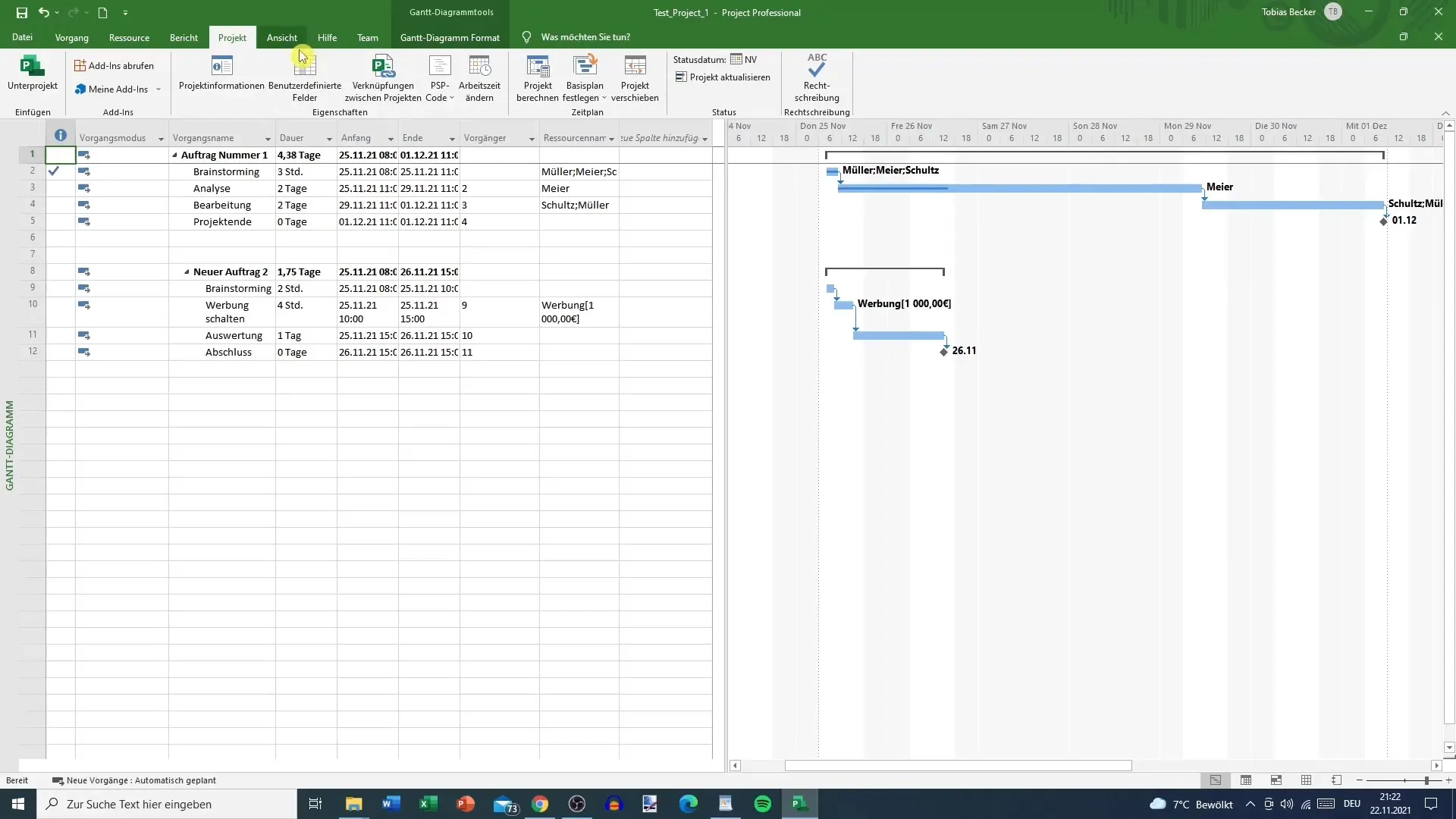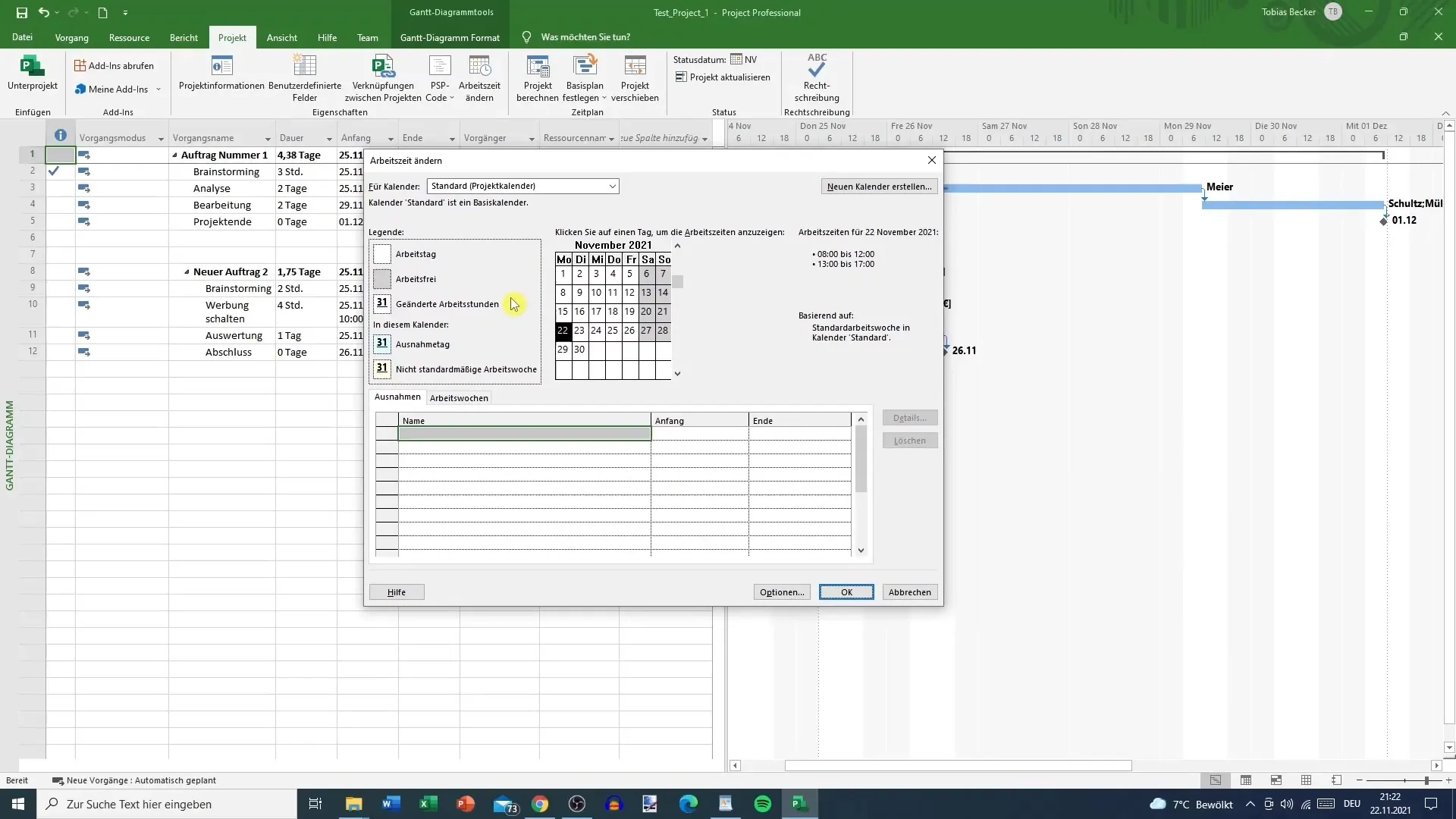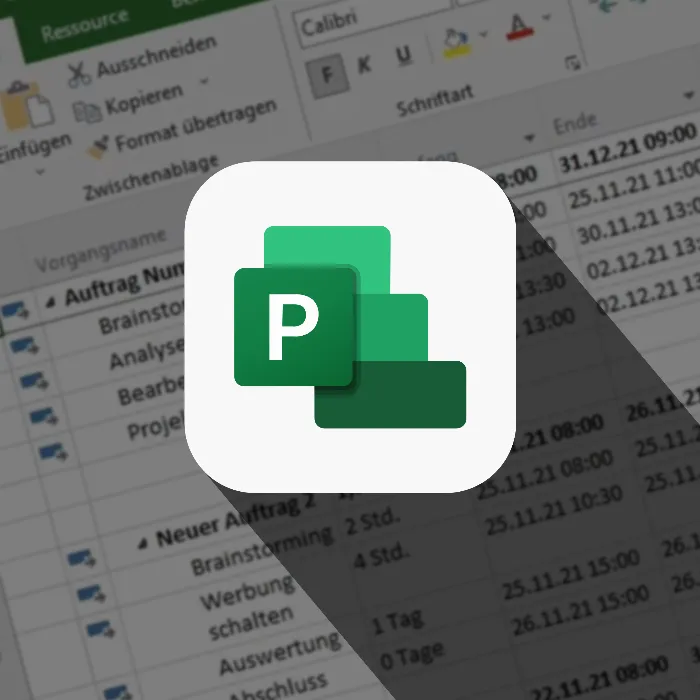Understanding different calendar types is essential to efficiently manage the work hours in your project. In this tutorial, we take a close look at the three basic calendar types in MS Project: the standard calendar, night shift calendar, and 24-hour calendar. These calendars not only help you plan your work hours accurately but also assist in efficiently considering exceptions and non-working days.
Main Insights
- There are three basic calendar types in MS Project: Standard, Night Shift, and 24 Hours.
- Each calendar has specific work hours and deviations that can be adjusted.
- Choosing the appropriate calendar significantly influences the planning and execution of your project.
Step-by-Step Guide
To understand and utilize the calendar types, follow this step-by-step guide.
First, it is necessary to examine the various calendars in MS Project. Open the project you are working on. Navigate to the "Project" tab and click on "Change Working Time". Here you will find an overview of the available calendar types.

Now you will see the "Change Working Time" field where you can select the different calendars. The standard calendar represents the typical project calendar commonly used for most projects.

In addition, there is the night shift calendar. This is particularly useful if your project requires working hours during the night. Note that this calendar can be defined over two days, meaning that activities running into the early morning hours will be accurately recorded.
Another calendar is the 24-hour calendar, which displays continuous availability from 0 to 0 hours. This calendar is suitable, among other things, for projects requiring a constant workflow, such as in hospital care.
As you go through the various calendar types, also pay attention to the legend providing you with a visual orientation on non-working days. These are highlighted in gray in the overview. For example, you can see that Saturday and Sunday are marked as non-working days.
An important aspect to consider is the "exceptional" work hours on certain days. On a sample day, the 22nd of the month, you can see that work is carried out from 8 am to 12 pm, followed by a break and another work period from 1 pm to 5 pm. This totals to 8 hours in total.
The specific work hours are spread out over 5 days, amounting to a total of 40 work hours. Therefore, always be mindful of such distributions and how they can deviate from the standard.
If you are working with night shifts, you will notice that the work hours are structured differently here. For instance, there is a work period from 11 pm to 12 am followed by additional shifts, indicating work across days.
It is essential to pay close attention to the specific work patterns occurring in your project. You can also utilize the 24-hour option for work that does not have a set working day, which can be beneficial for many projects in the industry.
These three calendar types and the customization of their work hours allow you to maintain a clear overview of project planning and manage exceptions when necessary.
Summary
In this tutorial, you have learned how to utilize the different calendar types in MS Project. You have explored the options of Standard, Night Shift, and 24 Hours and understood how they affect the planning and execution of your project.
Frequently Asked Questions
How can I change the calendar types in MS Project?You can select the calendar types under the "Project" tab and click on "Change Working Time".
What is the difference between the three calendar types?The standard calendar is for typical 8-hour days, the night shift calendar is for nighttime work hours, and the 24-hour calendar is for continuous work.
How can I define non-working days in my calendar?This is done automatically when you use the calendar types and make the appropriate settings.


